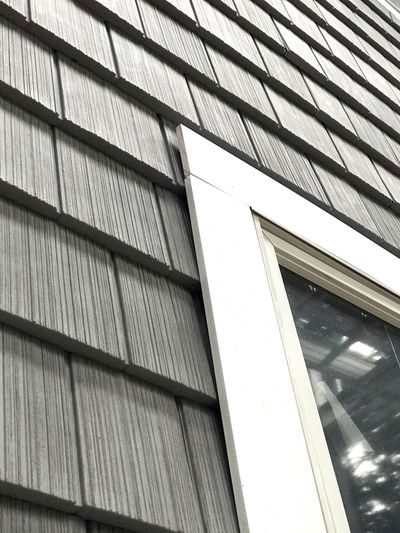Ask the Builder: Dressing up vinyl siding

Q. The house I grew up in had vinyl siding, and the trim around the windows was some thin, distasteful vinyl that had an end profile like the letter J. I thought it looked abominable. How can you make the vinyl siding look more like a traditional home that has wider trim pieces? What else can be done to make the vinyl siding look more attractive? – Beverly T., Fort Wayne, Indiana
A. Holy tomato! It’s impossible to list all the vinyl siding accessories and options that are available. For starters, don’t think that you have to use just one color and siding style on your home. Quite a few homes I see are incorporating white trim with two complementary colors and siding profiles.
If you want real inspiration, go online and look at photos of the paint schemes of some of the grand Victorian Ladies. Some houses incorporate three or more colors. I had horizontal lap siding at the last Queen Anne Victorian-style home I built for my family, but, up in the gables, I used traditional cedar shakes like those found on many homes built in the late 1800s.
You can achieve this same look with vinyl siding, and the vinyl shakes can be a different color! But it gets even better. J-channel is still available, but the better choice would be a flat trim board that surrounds windows and doors. These flat boards come with a rabbited edge that creates a hidden recess for the siding to slide behind. It works the same way the older J-channel works, but it’s so much better looking.
The flat trim boards come in various widths. The wider boards work better at the outside corners of the house, as it’s important to maintain scale when trimming out a house. The narrow trim boards used around windows and doors would look like pinstripes at the corners.
Don’t forget to look at the striking door surrounds that will really make your doors the focal point of the front and rear of your home. Some are simply breathtaking. You can now get gorgeous mounting blocks for exterior lights and electrical outlets that also have built-in channels on the edges. These really dress up the look of a vinyl-sided home.
Attic ventilation comes into play here, too. Older homes always had square, rectangular or triangular louver attic vents in the gable end. Those same vents are all available for vinyl siding – and, once again, don’t be afraid to make them a complementary color. Color experts might agree that these should match the trim color around windows and doors. Study the vinyl siding brochures, and you’ll see what I mean about using a different color.
I would spend lots of time looking at photo galleries at all the vinyl siding manufacturers’ websites. When you see a photo that puts your head on a swivel, study it and take notes on exactly what you like about the photo. There’s no need to hope your new siding will look great. You can guarantee it by just finding a look you know looks superb.
Q. Tim, I live in a condo and wonder what might be done to lessen the noise I hear coming from some of my neighbors. Are there any easy fixes that I might be able to tackle? – Linda S., Chicago
A. Soundproofing spaces is a science. Do a small amount of research online to discover how radio broadcasting booths are soundproofed. Most are immune from the noise that’s trying to get inside the room and then into the live microphones!
Sound travels through the air. The easiest thing to do is to try to seal any air leaks between your condo and the ones around you. Imagine if your condo started to fill with water, where would it leak out? These are places the air is leaking into your condo. Remove the cover plates from electrical outlets and caulk the gap between the drywall and side of the electrical box. I’d then install a foam gasket behind the outlet cover to try to stop other air leakage.
The sound could be leaking under the baseboards of your unit. If you have toe stripping, you may want to remove it and caulk any gaps between the floor and the baseboard trim. Recessed ceiling lights are the toughest thing to seal because some need air space to ensure that the fixture doesn’t overheat.
Hallway noise infiltration can be minimized or eliminated by installing weather stripping around the door. Seal your door as if you were battling bitter cold air out in the hallway.
There are many things that can be done during construction to make condos soundproof. Trying to retrofit a condo can be prohibitively expensive. As a last resort, consider a subtle white-noise generator in your unit to combat unwanted noise. I’ve heard they work well.
Subscribe to Carter’s free newsletter and listen to his new podcasts. Go to askthebuilder.com.